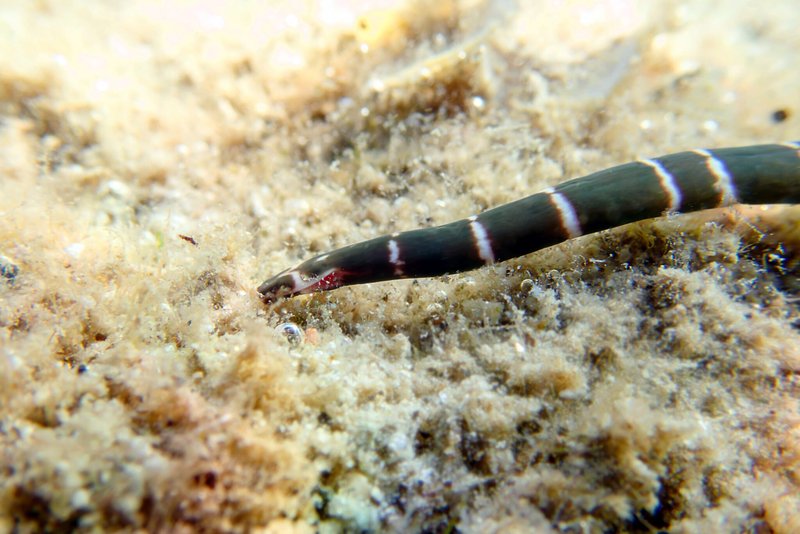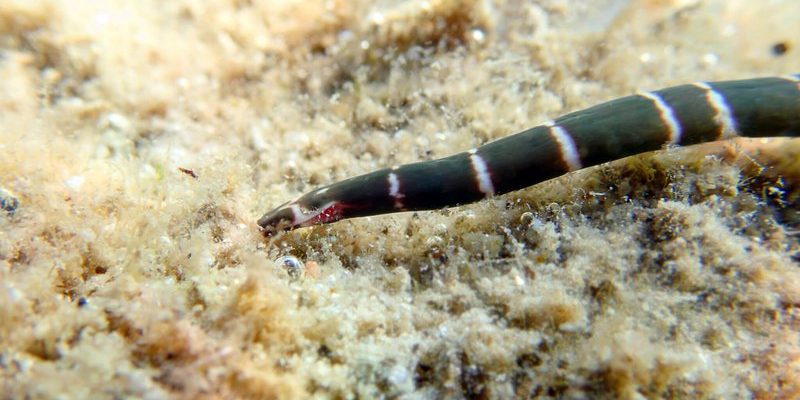
Ribbon worms belong to a group called *Nemertea*, which is a bit of a mouthful but simply means they’re long, soft-bodied worms with a unique way of moving and feeding. Picture a ribbon dancing in the breeze – these worms can stretch and contract their bodies to glide smoothly through their environment, whether that’s salty ocean water or fresh river flows. But where do they actually call home? Are they mainly marine creatures, or do they have a place in freshwater ecosystems as well? Here’s what you need to know.
What Are Ribbon Worms?
Ribbon worms are fascinating creatures that can vary in size from just a few millimeters to several meters long! Their bodies are flat and elongated, resembling a ribbon or a snake, which is where they get their name. Most ribbon worms have a colorful appearance, ranging from brown and green to vibrant pinks and reds.
These worms are part of the *Nemertea* phylum, which includes around 1,300 species worldwide. They tend to be soft-bodied and are often found burrowing into mud or sand at the bottom of the ocean or other bodies of water. One of their coolest features is their proboscis, a long, retractable tube they use to catch prey, mainly small invertebrates like crustaceans and worms.
You might be wondering how they move around in their habitats. Ribbon worms typically glide over surfaces using a form of movement called peristalsis, where they contract and relax their muscles to push their bodies forward. This allows them to navigate through different environments quite effortlessly.
Where Do Ribbon Worms Live?
Most ribbon worms are found in marine environments, particularly along coastlines and in shallow waters. They love to hide in the sand, mud, or amongst aquatic vegetation, making it a bit tricky to spot them. However, they aren’t exclusively ocean dwellers. Some species have adapted to life in various other habitats.
Interestingly, certain types of ribbon worms can also live in freshwater ecosystems, though they are less common there. You might find them in ponds, lakes, and sometimes even in slow-moving rivers or streams. These freshwater ribbon worms usually belong to specific species that have evolved to thrive in this different environment.
Identifying freshwater ribbon worms can be a challenge since they look quite similar to their saltwater relatives. However, due to their adaptability, they have different behaviors and sizes that can help differentiate them. So, if you’re ever exploring a pond and spot something long and slightly wiggly, it just might be a ribbon worm enjoying its freshwater home!
Types of Freshwater Ribbon Worms
Although most ribbon worms prefer marine environments, some species have made a name for themselves in freshwater habitats. Notably, species like *Drepanophorus crassus* and *Tetrastemma* are known to thrive in freshwaters. These types have adapted uniquely to their surroundings.
Here are some key characteristics of freshwater ribbon worms:
- Color Variation: They may display different colors than those found in the ocean, often blending in with the muddy or plant-rich environments of freshwater ecosystems.
- Size: Freshwater ribbon worms are usually smaller than their saltwater cousins, making them less noticeable.
- Habitat Preferences: They prefer slower-moving environments where they can bury themselves into mud or sand, making them harder to spot.
These adaptations make freshwater ribbon worms interesting subjects for scientists studying biodiversity and ecosystem health. They help us understand how life can thrive in unexpected places.
The Importance of Ribbon Worms in Ecosystems
Even though ribbon worms might look like simple creatures, they play an essential role in their ecosystems. In both marine and freshwater environments, they serve as predators, consuming small invertebrates and helping control populations. This helps maintain a balanced food chain.
Moreover, ribbon worms are prey for various animals. Larger fish, birds, and even some mammals rely on them as a food source. Their presence in an ecosystem can indicate healthy biodiversity, showcasing a thriving and balanced environment.
Furthermore, ribbon worms effortlessly recycle nutrients back into the ecosystem. As they feed and break down organic matter, they contribute to the overall health of the aquatic environment, ensuring that other organisms can thrive as well.
Challenges and Threats to Ribbon Worms
Like many creatures in our ecosystems, ribbon worms face challenges that threaten their populations. Habitat destruction is a primary concern. As wetlands are drained, and rivers are altered for development, the environments where ribbon worms thrive are diminished.
Pollution is another significant issue. Chemicals from agriculture and urban runoff can contaminate freshwater habitats, affecting the health of organisms living there, including ribbon worms. Changes in water temperature due to climate change also impact their delicate ecosystems.
Additionally, invasive species can disrupt the balance of ecosystems where ribbon worms are found. These foreign organisms can outcompete native species, leading to declines in local biodiversity, including ribbon worms. Protecting their habitats is essential for maintaining diverse and healthy aquatic ecosystems.
How to Find and Study Ribbon Worms
If you’re curious about ribbon worms and want to observe them in their natural habitat, it’s not too difficult! Here are a few tips to help you get started:
1. **Choose the Right Spot:** Look for slow-moving rivers, lakes, or ponds with muddy bottoms or aquatic vegetation. These areas are more likely to host ribbon worms.
2. **Use the Right Equipment:** A small shovel or trowel can help you carefully dig into the mud or sand. A hand lens or magnifying glass can be handy for examining them up close.
3. **Observe Carefully:** Gently dig and sift through the mud. Ribbon worms may retract quickly, so be patient. Look for long, thin, wiggly shapes that might emerge.
4. **Document Your Findings:** Take pictures and notes to document your observations. It’s a great way to learn more about these fascinating creatures and their habitats.
Remember, if you choose to observe ribbon worms, be gentle. We want to ensure they continue to thrive in their environments for years to come.
So, can ribbon worms be found in freshwater? Absolutely! While they’re predominantly marine creatures, some species have adapted beautifully to freshwater environments. They are a testament to nature’s incredible ability to adapt and thrive in various conditions. By understanding their role in ecosystems and the challenges they face, we can better appreciate these complex and important creatures.
Next time you’re near a pond or river, keep an eye out for these long, slippery inhabitants. Whether in freshwater or saltwater, ribbon worms remind us of the beauty and diversity of life on our planet.

